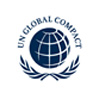Closure planning
Our industrial activities are finite. We recognise that we are temporary custodians of the land on which we operate, and we are committed to responsible land ownership and to meeting a set of objectives and criteria relating to post-closure land use that are agreed with key stakeholders. We believe this is possible by integrating closure planning throughout the life of an asset, with the objective of achieving safe and stable landforms and sustainable outcomes that consider our Just Transition Principles.
Our approach
We are planning to close aseveral industrial assets within the next five years. We align our closure planning and execution approach with the ICMM's Closure Maturity Framework. This provides confidence to our stakeholders that we take our stewardship of the land seriously, and work towards a just and orderly transition for our workforce and the communities living near our industrial assets as our operations approach closure.
Our approach includes planning for both land rehabilitation and socio-economic transition as early as feasible. Where appropriate, we conduct progressive rehabilitation on previously disturbed areas once active operations have completed.
Our industrial assets consult with key stakeholders and local communities and endeavour to reach a common approach and understanding on the development of their closure plans and monitor the societal risks and opportunities associated with closure.
Closure planning enables the safe and responsible closure of industrial assets that have reached the end of operational life. Through our Closure Planning Standard, we require our industrial assets to have a closure plan that could be initiated at any time for a planned, unplanned or temporary closure, and to consult with local communities on the development of their closure plans. Our industrial assets develop closure plans, including progressive rehabilitation programmes where appropriate, to incrementally rehabilitate the land over the life of an industrial asset.
Our industrial assets develop and maintain closure plans that follow good practice, such as the ICMM’s Integrated Mine Closure Good Practice Guide. Industrial assets develop their closure plans in consultation with local communities, to consider their needs and identify opportunities to contribute to socio-economic resilience, and in accordance with regulatory requirements. Industrial assets also monitor the societal risks and opportunities associated with closure.
We develop financial estimates for closure planning, with financial assurance typically provided to government agencies prior to development or expansion. Our industrial assets are required to regularly review their closure plans to ensure they remain fit for purpose and align with the industrial asset’s life cycle.
Industrial asset closure planning requirements vary depending on each asset's life cycle stage, existing processes, scale, age and complexity. We have adopted the ICMM Closure Maturity Framework to measure closure maturity. We require our industrial assets to be working towards meeting international good practice closure maturity requirements for each of the ICMM’s 14 closure maturity elements. Our industrial assets undertake a self-assessment against the ICMM Closure Maturity Framework to determine their level of closure planning maturity against a desired level of maturity.
Between 2024 and 2028, we intend to focus on reaching the desired closure maturity levels at industrial sites nearing closure, prioritising those sites with the earliest closure dates. Our industrial assets are also required to implement our Project Management Standard, which sets requirements for how we manage major projects and which forms part of our closure maturity requirements.
We support our industrial assets’ efforts to achieve the necessary closure planning implementation, considerations and methodology, as outlined in our Closure Planning Guideline.
We monitor our performance to drive improvement, and we investigate incidents during closure to prevent repeats. Our assurance processes are designed to support the principles of adaptive management and align with the ICMM Performance Expectations.
Progressive rehabilitation
A core component of our operations’ life cycles is progressive rehabilitation. Where active operations have ceased, we review opportunities for restoration and rehabilitation in the previously operated areas. Progressive rehabilitation has benefits that include reducing an operation’s footprint, improving the visual appeal of the landscape, and reducing dust, erosion and sedimentation, as well as improving conditions for local communities and future land users.
To support progressive rehabilitation, if land becomes available our industrial assets may undertake various actions in earlier lifecycle stages, such as the excavation and preservation of topsoil and overburden from areas designated for operations, prior to development.
Principles we follow
-
 UN Global CompactVisit the website
UN Global CompactVisit the website -
 Principle 7Read more
Principle 7Read morebusinesses should support a precautionary approach to environmental challenges
-

-
 Principle 9Read more
Principle 9Read moreencourage the development and diffusion of environmentally friendly technologies
-
ICMMVisit the website
-

-

-
 UN SD GoalsVisit the website
UN SD GoalsVisit the website -

-

-


